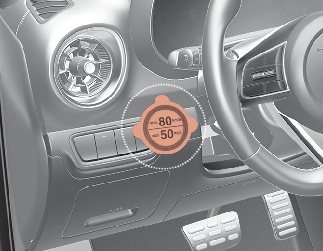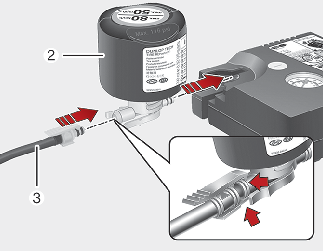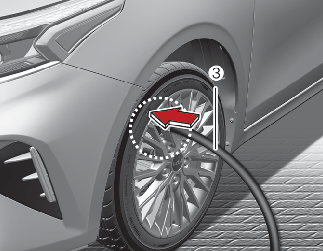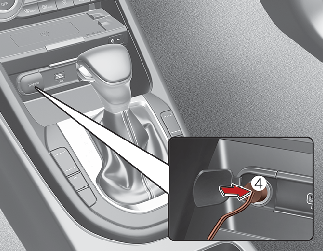Using the TMK
-
Detach the speed restriction label (1) from the sealant bottle (2) and place it in a highly visible place inside the vehicle such as on the steering wheel to remind the driver not to drive too fast.
-
Strictly follow the specified sequence, otherwise the sealant may escape under high pressure.

 CAUTION
CAUTIONBefore using the TMK, carefully read the instruction attached to the sealant case. Detach the speed limit label on the sealant case and put it on a highly visible place (such as the steering wheel). Always drive within the speed limit.
-
Shake the sealant bottle.

-
Connect the filling hose (3) onto the connector of the sealant bottle.

-
Ensure that button (7) on the compressor is not pressed.
-
Unscrew the valve cap from the valve of the defective wheel and screw filling hose (3) of the sealant bottle onto the valve.

-
Insert the sealant bottle into the housing (5) of the compressor so that the bottle is upright.
-
Ensure that the compressor is switched off.
-
Connect the compressor and the vehicle power outlet using the cable and connectors (4).

 CAUTION
CAUTIONDo not connect another vehicle's TMK to the power outlet or battery terminal.Unmatched power requirement between the vehicle power outlet and the TMK can cause fire or circuit damage within the vehicle and the TMK.
-
With the ignition switch or ENGINE START/STOP button position On. switch on the compressor and let it run for approximately 5~7 minutes to fill the sealant up to proper pressure. (Refer to More Details.) Be careful not to overinflate the tire and stay away from the tire when filling it. When the tire and wheel are damaged, do not use TMK for your safety.
 WARNING
WARNINGTire pressure
Do not drive your vehicle if the tire pressure is below 29 psi (200 kPa, 2 bar).
This could result in an accident due to sudden tire failure.
-
Switch off the compressor.
-
Detach the hose from the sealant bottle connector and from the tire valve.
Return the TMK to its storage location in the vehicle.

Carbon monoxide poisoning and suffocation is possible if the engine is left running in a poorly ventilated or unventilated location (such as inside a building).